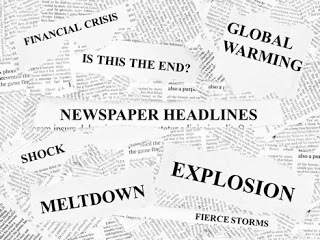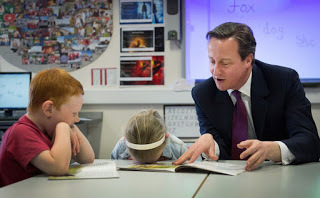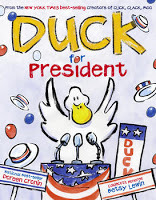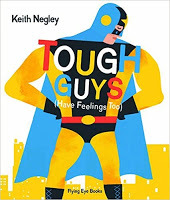Responding to a Call to Action by Chitra Soundar
We’re living in strange times – where dystopia is no longer confined to the pages of a novel. Around us we find fear and insecurity, differences and intolerances turn into political ideology and public policy.

How does a children’s book writer get involved? My readers are wee people who do not understand constitution or right to vote. Many are perhaps not even potty trained. What could I possibly do to bring about change?
Read an interesting discussion in the New York Times - that discusses this very topic.
Good picture books have multiple layers and meanings. While it deals with a child’s emotion in a child’s world from the point of view of a child, it also has an adult reader, often. Many picture books are read aloud by sleepy-eyed parents, novice aunts and uncles doing bedtime as a novelty or grandparents who are amazed at how much books have changed over the years.

Any topic being discussed – whether hidden inside a story or a narrative that explains a concept – space, dinosaurs, trucks need to appeal to the child first and foremost. Then it needs to engage the adult reader too. If it manages both, then of course reading it over and over again becomes less of a chore.
So as a writer in this complex political world, I have two voters for every read – a contemporary voter who hopefully would vote in the next election (by the looks of it, we might have it regularly like an annual summer event) and a child voter who is the future of this nation. This captive audience is looking for a story. A story that they can enjoy, laugh with, think about and perhaps learn from. A story that doesn’t beat the moral over the reader’s head but through its nuanced plot elements, leads us to the inevitable but surprising ending.
 As I watched the election results trickle by, as the nation rejoiced of a hung parliament, I realised I have an obligation to stand up and tell stories that
As I watched the election results trickle by, as the nation rejoiced of a hung parliament, I realised I have an obligation to stand up and tell stories that
a) promote equality, diversity, empathy and compassion
b) children of all colour, abilities and gender in a positive light
c) give us hope instead of despair; joy in the face of adversity.
Many of us remember the books we read as kids. Many of us have learnt some crucial things about life from books. So what better way to equip the voters of tomorrow? What better way to prepare the minds of young readers than give them stories that they can apply in real life that will bring about a better society for everyone?
 Children’s writers have an important role in these interesting times. Whether we are talking about underpants or wishing the rabbit good night, we need to make our characters stand up for something. They need to find their way in these murky times through stories we tell and stories we equip them to tell.
Children’s writers have an important role in these interesting times. Whether we are talking about underpants or wishing the rabbit good night, we need to make our characters stand up for something. They need to find their way in these murky times through stories we tell and stories we equip them to tell.
 This is the time to bring out stories that empower our children with skills and sensitivity to live in an integrated society, where we do not fear “the other” and “the unknown.” And the good news is many writers are already doing this. There are books out there that show us “others” are not different. Like Siddhartha Mukherjee says in his book The Gene – An Intimate History, we are more similar than different as human beings.
This is the time to bring out stories that empower our children with skills and sensitivity to live in an integrated society, where we do not fear “the other” and “the unknown.” And the good news is many writers are already doing this. There are books out there that show us “others” are not different. Like Siddhartha Mukherjee says in his book The Gene – An Intimate History, we are more similar than different as human beings.
On 13th June, Empathy Lab UK initiated a new celebration called EmpathyDay and on that day, we all tweeted our recommended reads. I’ve started collecting them all here. If you know of a book that inspires empathy, promotes togetherness and brings us together, then do post in the comments below or tweet it out with hashtag #ReadForEmpathy.
Let’s help raise better citizens for tomorrow.
 Chitra Soundar is a closet clown, consummate liar, writer and storyteller. Find out more at www.chitrasoundar.com or follow her on Twitter at @csoundar.
Chitra Soundar is a closet clown, consummate liar, writer and storyteller. Find out more at www.chitrasoundar.com or follow her on Twitter at @csoundar.

How does a children’s book writer get involved? My readers are wee people who do not understand constitution or right to vote. Many are perhaps not even potty trained. What could I possibly do to bring about change?
Read an interesting discussion in the New York Times - that discusses this very topic.
Good picture books have multiple layers and meanings. While it deals with a child’s emotion in a child’s world from the point of view of a child, it also has an adult reader, often. Many picture books are read aloud by sleepy-eyed parents, novice aunts and uncles doing bedtime as a novelty or grandparents who are amazed at how much books have changed over the years.

Any topic being discussed – whether hidden inside a story or a narrative that explains a concept – space, dinosaurs, trucks need to appeal to the child first and foremost. Then it needs to engage the adult reader too. If it manages both, then of course reading it over and over again becomes less of a chore.
So as a writer in this complex political world, I have two voters for every read – a contemporary voter who hopefully would vote in the next election (by the looks of it, we might have it regularly like an annual summer event) and a child voter who is the future of this nation. This captive audience is looking for a story. A story that they can enjoy, laugh with, think about and perhaps learn from. A story that doesn’t beat the moral over the reader’s head but through its nuanced plot elements, leads us to the inevitable but surprising ending.
 As I watched the election results trickle by, as the nation rejoiced of a hung parliament, I realised I have an obligation to stand up and tell stories that
As I watched the election results trickle by, as the nation rejoiced of a hung parliament, I realised I have an obligation to stand up and tell stories thata) promote equality, diversity, empathy and compassion
b) children of all colour, abilities and gender in a positive light
c) give us hope instead of despair; joy in the face of adversity.
Many of us remember the books we read as kids. Many of us have learnt some crucial things about life from books. So what better way to equip the voters of tomorrow? What better way to prepare the minds of young readers than give them stories that they can apply in real life that will bring about a better society for everyone?
 Children’s writers have an important role in these interesting times. Whether we are talking about underpants or wishing the rabbit good night, we need to make our characters stand up for something. They need to find their way in these murky times through stories we tell and stories we equip them to tell.
Children’s writers have an important role in these interesting times. Whether we are talking about underpants or wishing the rabbit good night, we need to make our characters stand up for something. They need to find their way in these murky times through stories we tell and stories we equip them to tell. This is the time to bring out stories that empower our children with skills and sensitivity to live in an integrated society, where we do not fear “the other” and “the unknown.” And the good news is many writers are already doing this. There are books out there that show us “others” are not different. Like Siddhartha Mukherjee says in his book The Gene – An Intimate History, we are more similar than different as human beings.
This is the time to bring out stories that empower our children with skills and sensitivity to live in an integrated society, where we do not fear “the other” and “the unknown.” And the good news is many writers are already doing this. There are books out there that show us “others” are not different. Like Siddhartha Mukherjee says in his book The Gene – An Intimate History, we are more similar than different as human beings. On 13th June, Empathy Lab UK initiated a new celebration called EmpathyDay and on that day, we all tweeted our recommended reads. I’ve started collecting them all here. If you know of a book that inspires empathy, promotes togetherness and brings us together, then do post in the comments below or tweet it out with hashtag #ReadForEmpathy.
Let’s help raise better citizens for tomorrow.
 Chitra Soundar is a closet clown, consummate liar, writer and storyteller. Find out more at www.chitrasoundar.com or follow her on Twitter at @csoundar.
Chitra Soundar is a closet clown, consummate liar, writer and storyteller. Find out more at www.chitrasoundar.com or follow her on Twitter at @csoundar.
Published on June 18, 2017 23:00
No comments have been added yet.



